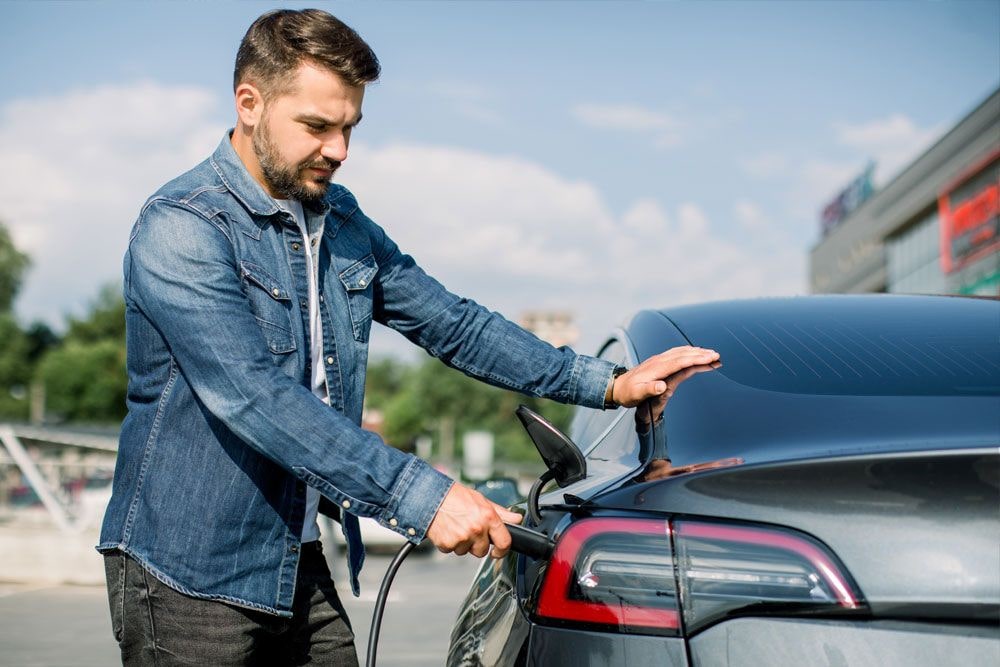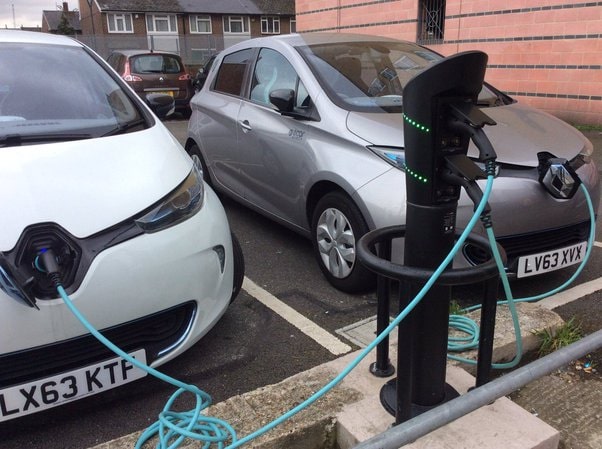Do You Own EV Charging Stations Yet?
With the rising popularity of electric vehicles (EVs), many drivers opt for new energy electric cars to align with green initiatives. This has brought about a redefinition in how we charge and manage energy. Despite this, many drivers, particularly those residing in areas with extreme weather conditions, remain hesitant about the safety of charging their electric vehicles.
Where Need Electric Car Charging In Extreme Cold?
As the EV industry continues to expand rapidly, the quality of EV charging equipment available on the market is variable. The harsh and complex weather conditions necessitate more rigorous requirements for the stable performance of EV charging equipment. This challenges electric vehicle enterprises in sourcing suitable EVSE charging equipment.
Current Situation Of The Electric Vehicle Charging Industry
Northern Europe, for instance, is renowned for its freezing weather. Countries such as Denmark, Norway, Sweden, Finland, and Iceland are situated at the world’s northernmost point, where winter temperatures can plummet to as low as -30°C. During Christmas, daylight hours can be limited to just a few.
Furthermore, parts of Canada have sub-polar climates where snow remains on the ground throughout the year, and winter temperatures can drop as low as 47 degrees Celsius. Inclement weather makes travel a more cautious endeavor.
Impact Of Extreme Weather On Electric Car Charging
You may have observed that using your mobile phone in frigid outdoor temperatures can diminish its battery life, whereas excessive heat can cause it to shut down. This phenomenon is attributed to batteries, whether in cell phones, laptops, or vehicles, having an optimal operating temperature range that maximizes energy efficiency.
The same principle applies to the batteries in electric vehicles, which, like humans, function less efficiently when exposed to temperatures outside their preferred range.
In winter, wet and snowy road conditions increase the resistance electric vehicles must overcome while driving, leading to greater electricity consumption than on dry roads. Moreover, shallow temperatures impede the chemical reactions inside the battery, reducing its power output, and potentially decreasing the range, albeit without harming the batteries over the long term.
In severe weather conditions, electric vehicles typically experience an average range reduction of around 20%, compared to a 15-20% decrease in MPG for internal combustion engine vehicles.
As a result, electric vehicle drivers need to charge their vehicles more frequently than during favourable weather conditions. Selecting appropriate and reliable charging equipment for electric vehicles is also a crucial factor to consider.
What Are The Available Charging Options For Electric Vehicles?
The primary component powering an electric vehicle is the electric motor, which relies on the battery for energy. There are two predominant methods for charging these batteries: AC charging and DC charging.
One of the more widely and safely used charging options than DC EV charging is AC charging, which is also the recommended method for all-electric car owners, according to Mida.
Within the realm of AC charging, there exists the built-in car charger. This device receives AC (alternating current) power as input, subsequently converted to DC (direct current) power before being transmitted to the battery.
This is necessary because the battery is only compatible with DC power. Built-in chargers are the most commonly used option for home and overnight charging.
Charging speeds of AC EV chargers range from 3.6 kW to 43 kW/km/h, making them suitable for use in extremely cold weather conditions and providing a safe and efficient means of charging electric cars.
What Is Mida‘s Recommended Electric Vehicle Supply Equipment?
All Mida products are suitable for AC charging and are currently available as EV charging stations, portable EV chargers, EV charging cables, EV charging accessories, and other product series, all of which meet strict waterproof and robustness standards and can withstand extreme weather such as heavy rain and extreme cold.
If you prefer charging your electric car at home, consider Mida’s BS20 series EV charging station, which can be installed in your garage or at your doorstep.
On the other hand, if you frequently travel outdoors and require on-the-go charging, our portable EV charger, conveniently carried in your vehicle, can fully satisfy your needs.
The Mida product range meets strict waterproof and rugged standards and can withstand extreme weather conditions such as heavy rain and cold!
Moreover, as an electric vehicle supply equipment that has sold its products to more than 40 countries over 13 years, Mida offers OEM and ODM services, having completed 26 customized projects for multiple clients.
You can choose safer, more stable, and weather-resistant EV charging equipment at Mida for your household electric car station.
EV Charging Principle In Extremely Cold Weather
In cold conditions, the charging goal is to gently warm the battery by gradually increasing the amount of electricity it receives. If you switch it on abruptly, there is a risk that some aspects of the battery will heat up faster than others, which could exert stress on the chemicals and materials forming the battery, potentially causing damage.
Therefore, it is recommended to gradually turn the dial so that the battery as a whole heats up and is ready to receive the entire flow of electricity.
This means that you may experience slightly longer charging times in colder weather. However, this has little impact on your overall charging experience – waiting a few extra minutes is much better than risking potentially unsafe charging.
Why Can Mida‘s Electric Vehicle Charging Equipment Cope With Extreme Weather Conditions?
Mida’s EV charging equipment is constructed with premium materials, including seals and coatings, to enhance the sealing and water resistance of the product. Additionally, the tail sleeve of the plug is waterproof.
Even more impressive, our car end plug boasts a unique integrated design without any screws, which renders it more sturdy and capable of effectively enduring extreme weather conditions such as heavy rain or open-air snow storms.
The selection of TPU cable material is not only environmentally friendly in compliance with the new European standards but also ensures the product’s flexibility in icy weather conditions.
The terminal adopts a unique leaf spring design that fits snugly and can effectively remove dust on the terminal surface during the plugging and unplugging process while guaranteeing spark-free operation.
Our custom-made industrial LCD screen provides clear charging information under any condition without any haze or distortion.
Apart from superior product insulation and waterproofing performance, all products from Mida come with comprehensive certification credentials, ensuring their quality.
Mida offers a comprehensive range of professional electric vehicle charging equipment to meet all your charging needs.
EV Charging Technology Improvement
Electric car manufacturers are improving temperature-control technology to compensate for some of these problems.
For instance, several models now come equipped with battery heaters or other technologies to heat the battery and improve efficiency in cold climates.
Other Tips To Help You Recharge During Extremely Cold Weather
Here are some tips to help drivers improve their electric cars’ efficiency, anticipate how they will perform in extreme temperatures, and brave the challenges of cold weather.
1. Make the electric car warmer.
If you have a choice of parking lots or outside, choose parking lots warmer for batteries. We can manually build rain and snow protection facilities for household charging equipment.
2. Use accessories wisely.
The inclusion of accouterments, namely the warming and cooling widgets and entertainment systems, undoubtedly impact the fuel efficiency of all modes of transportation. Still, their influence is even more pronounced regarding electric vehicles. Using seat and steering wheel heaters instead of heaters can save energy and extend your range.
3. Start warming the electric vehicle in advance.
Pre-heating or pre-cooling the cabin of an all-electric or plug-in hybrid electric vehicle while it is still plugged in can extend its electric range, especially in extreme weather.
4. Use the economy mode.
Many electric vehicles have an “Economy model” or similar feature that maximizes fuel economy. Economy mode may limit other aspects of vehicle performance, such as acceleration, to fuel savings.
5. Obey the speed limits.
At speeds over 50 miles per hour, efficiency usually declines.
6. Keep your tires in good condition.
Check tire pressure, keep tired adequately inflated, avoid dragging goods on the roof, remove excess weight, and improve efficiency.
7. Avoid hard braking.
Avoid hard braking and anticipate braking situations. As a result, the vehicle’s regenerative braking system is enabled to retrieve kinetic energy from the car’s forward movement and retain it in the form of electrical power.
Conversely, abrupt braking necessitates using the conventional friction brakes of the vehicle, which cannot recycle energy.
Post time: Nov-09-2023

 Portable EV Charger
Portable EV Charger Home EV Wallbox
Home EV Wallbox DC Charger Station
DC Charger Station EV Charging Module
EV Charging Module NACS&CCS1&CCS2
NACS&CCS1&CCS2 EV Accessories
EV Accessories


